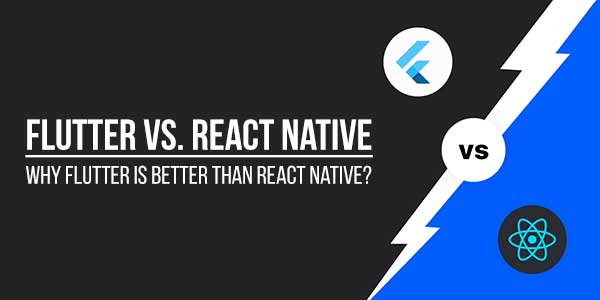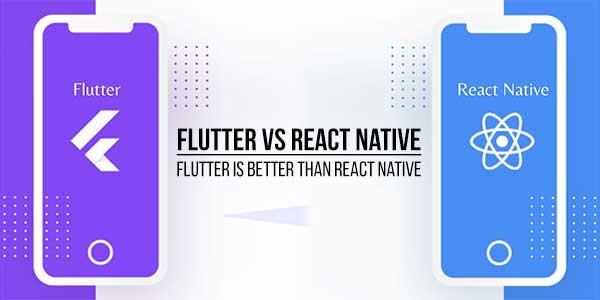
In today’s digital era, the demand for mobile app development has skyrocketed, prompting developers to seek efficient and reliable tools for building apps. Two popular frameworks that often come in comparison are Flutter and React Native. Flutter, developed by Google, and React Native, developed by Facebook, have gained immense popularity for cross-platform app development. While both frameworks offer powerful features and enable developers to create stunning mobile apps, there are several factors that make Flutter a better choice over React Native.
The choice between Flutter and React Native depends on various factors, including the specific requirements of your project, your team’s expertise, and personal preferences. Both frameworks are popular for building cross-platform mobile applications, and each has its own strengths and weaknesses.
At the time of writing this post, Flutter has acquired 158K at Github as compared to 113K stars claimed by React Native.
Table of Contents
UI Comparison:
First and foremost, Flutter provides a highly reactive and expressive user interface (UI). It uses a single codebase to build apps for both iOS and Android platforms, resulting in a visually appealing and seamless user experience. Flutter’s UI is composed of various widgets, which can be customized and combined to create unique designs. These widgets are designed to be platform-aware, offering a native-like look and feel on both iOS and Android devices. This eliminates the need for writing separate code for each platform and saves development time and effort.
On the other hand, React Native uses a different approach. It allows developers to write code using JavaScript and enables them to build native-like mobile apps. However, React Native relies on native components provided by the platform, which can sometimes lead to inconsistencies in UI elements across different devices. This can be a major challenge for developers, as they have to constantly make adjustments to ensure the app looks and functions correctly on various platforms. Flutter, on the other hand, overcomes this challenge by providing a consistent UI experience on all devices, eliminating the need for constant tweaking.
Performance Comparison:
Another key advantage of Flutter is its superior performance. Flutter apps are known for their fast and smooth performance, delivering a responsive user experience. This is due to Flutter’s architecture, which uses a rendering engine called Skia to build the UI. Skia ensures that the UI is rendered directly on the device’s canvas, eliminating the performance bottleneck caused by bridge communication with native components. As a result, Flutter apps have faster loading times, smoother animations, and overall better performance compared to React Native apps.
In contrast, React Native relies on a JavaScript bridge to communicate between the native components and the JavaScript code. This bridge introduces an additional layer of communication, which can impact the app’s performance and responsiveness. Although React Native has made significant improvements in this area, Flutter still outperforms it in terms of speed and efficiency.

DevelopmentComparison:
Furthermore, Flutter offers a hot reload feature, which greatly enhances the developer’s productivity. With hot reloading, developers can instantly see the changes they make in the code reflected in the app’s interface without restarting the app. This allows for rapid experimentation and iteration, enabling developers to quickly fine-tune the app’s UI and fix bugs. React Native also provides a similar feature called fast refresh, but it is not as reliable and efficient as Flutter’s hot reload. The convenience and efficiency provided by Flutter’s hot reload greatly streamline the development process and make it easier for developers to create high-quality apps.
When it comes to the development ecosystem, Flutter has rapidly gained popularity and has strong community support. The Flutter community is constantly growing, with developers contributing to a vast collection of packages and plugins. This extensive ecosystem provides developers with a wide range of tools and resources to enhance their app development process. Additionally, Flutter has excellent documentation and offers extensive support from the Flutter team and community. On the other hand, while React Native also has a thriving community, it is comparatively smaller and may have limited resources and support available.
Platform Comparison:
Lastly, Flutter ensures a consistent app experience across different platforms and devices. It eliminates the risk of platform-specific bugs and issues that commonly occur in cross-platform development. Flutter’s UI widgets adapt seamlessly to different screen sizes and resolutions, ensuring that the app looks and functions consistently across iOS and Android devices. This saves developers from the hassle of dealing with platform-specific quirks and ensures a positive user experience across all platforms.
Conclusion:
In conclusion, while both Flutter and React Native are powerful frameworks for cross-platform app development, Flutter clearly stands out as the better choice. Its highly reactive UI, superior performance, hot reload feature, strong development ecosystem, and consistent app experience make it the best hybrid platform for mobile app development. Flutter allows developers to create visually stunning and high-performing apps quickly and efficiently, making it the preferred choice for many developers in the industry. With its continuous growth and innovation, Flutter is poised to lead the future of cross-platform app development.
Ultimately, the “better” framework depends on your specific project requirements, your team’s expertise, and your personal preferences. Both Flutter and React Native are capable of building high-quality mobile applications, and developers often choose based on their familiarity with the language, the existing skill set of the team, and the specific needs of the project. It’s recommended to evaluate both frameworks based on your project’s criteria and possibly conduct small experiments or prototypes to see which one aligns better with your goals.

















This insightful comparison between Flutter and React Native convincingly positions Flutter as the preferred choice for cross-platform development. The article’s exploration of Flutter’s strengths in terms of performance optimization, widget-based flexibility, and a unified codebase for iOS and Android convincingly makes the case for its superiority. In a rapidly evolving tech landscape, this article serves as a timely guide for developers and businesses seeking a robust and efficient cross-platform solution.
Welcome here and thanks for reading our article and sharing your view. This will be very helpful to us to let us motivate to provide you with more awesome and valuable content from a different mind. Thanks again.
Such A great informative blog. Flutter offers a single codebase for both iOS and Android, ensuring consistent performance and UI across platforms. Its hot reload feature speeds up development, while Dart’s compiled language enhances app performance, making Flutter a strong choice over React Native.
Welcome here and thanks for reading our article and sharing your view. This will be very helpful to us to let us motivate to provide you with more awesome and valuable content from a different mind. Thanks again.